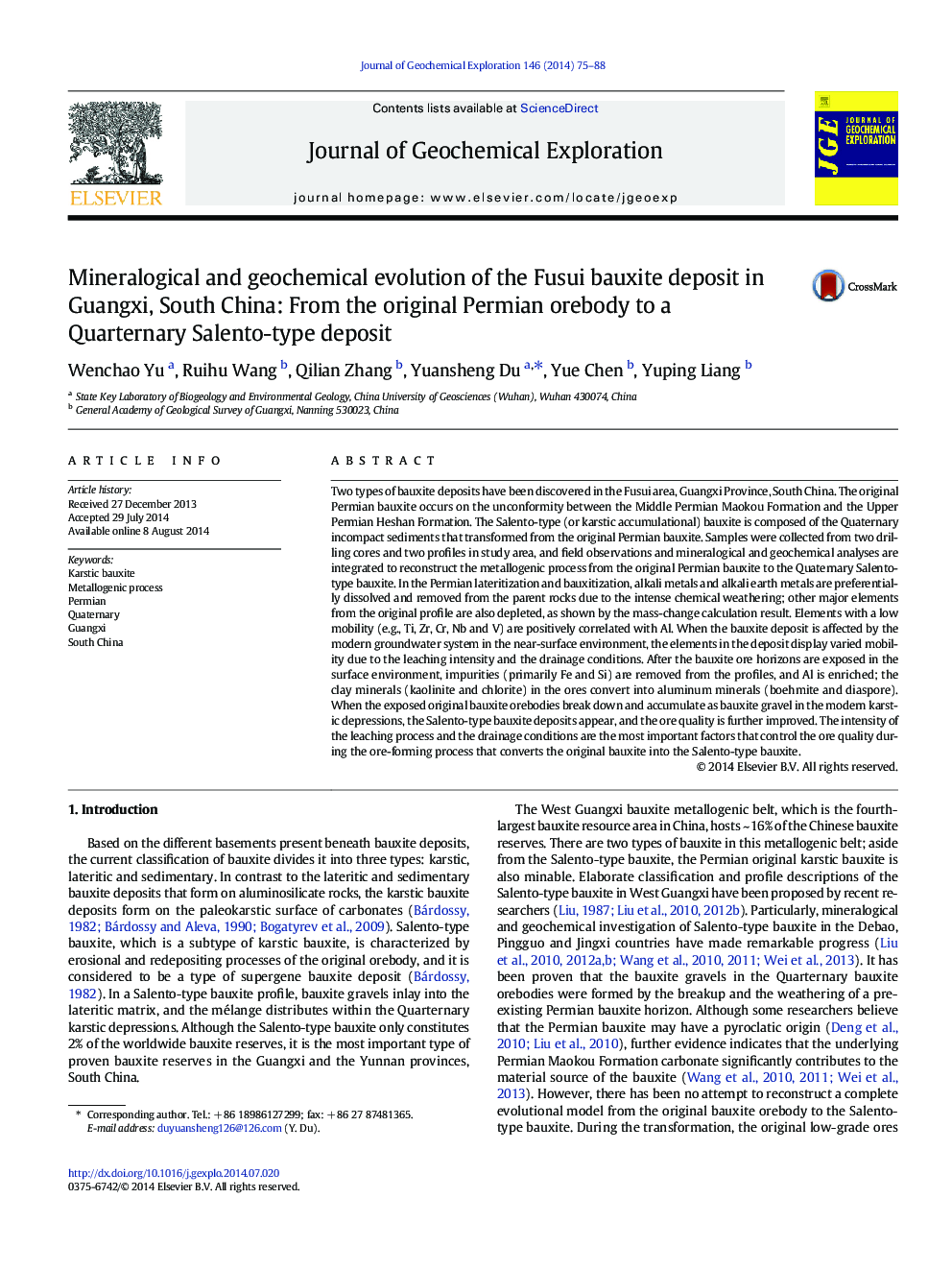| کد مقاله | کد نشریه | سال انتشار | مقاله انگلیسی | نسخه تمام متن |
|---|---|---|---|---|
| 4457276 | 1620912 | 2014 | 14 صفحه PDF | دانلود رایگان |

• Geological and mineralogical works on newly discovered bauxite orefield in Fusui, Guangxi, South China.
• Reconstruct the evolution process from the Permian orebody to the Quaternary Salento-type bauxite.
• Discuss the controlled factors on the ore qualities.
Two types of bauxite deposits have been discovered in the Fusui area, Guangxi Province, South China. The original Permian bauxite occurs on the unconformity between the Middle Permian Maokou Formation and the Upper Permian Heshan Formation. The Salento-type (or karstic accumulational) bauxite is composed of the Quaternary incompact sediments that transformed from the original Permian bauxite. Samples were collected from two drilling cores and two profiles in study area, and field observations and mineralogical and geochemical analyses are integrated to reconstruct the metallogenic process from the original Permian bauxite to the Quaternary Salento-type bauxite. In the Permian lateritization and bauxitization, alkali metals and alkali earth metals are preferentially dissolved and removed from the parent rocks due to the intense chemical weathering; other major elements from the original profile are also depleted, as shown by the mass-change calculation result. Elements with a low mobility (e.g., Ti, Zr, Cr, Nb and V) are positively correlated with Al. When the bauxite deposit is affected by the modern groundwater system in the near-surface environment, the elements in the deposit display varied mobility due to the leaching intensity and the drainage conditions. After the bauxite ore horizons are exposed in the surface environment, impurities (primarily Fe and Si) are removed from the profiles, and Al is enriched; the clay minerals (kaolinite and chlorite) in the ores convert into aluminum minerals (boehmite and diaspore). When the exposed original bauxite orebodies break down and accumulate as bauxite gravel in the modern karstic depressions, the Salento-type bauxite deposits appear, and the ore quality is further improved. The intensity of the leaching process and the drainage conditions are the most important factors that control the ore quality during the ore-forming process that converts the original bauxite into the Salento-type bauxite.
Journal: Journal of Geochemical Exploration - Volume 146, November 2014, Pages 75–88